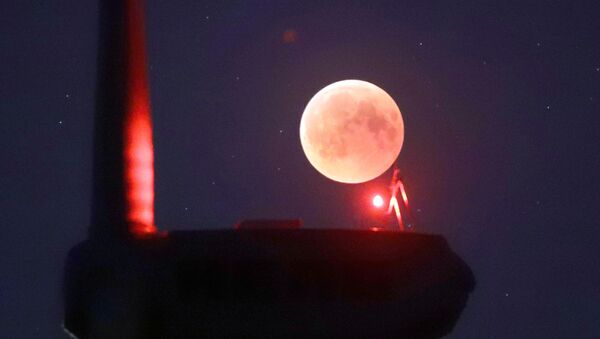Scientists have come up with an interesting twist on the old concept of space lift, which should, in theory, significantly cut the cost of future Lunar missions, The Daily Star reported Thursday.
In a traditional space lift, a cable connects Earth’s surface to an object in geostationary orbit, allowing space missions to avoid using jet-powered rockets. A cable that could work in this context is impossible to build at this moment, as it would be too heavy to support its own weight. Scientists are now looking to carbon nanotubes, but the tech is not yet formalized.
A newly proposed project called Spaceline, however, uses a different approach, instead suggesting tethering the cable to the Moon, causing it to “dangle” into Earth’s gravity well.
“The movement of people and supplies along it are much simpler and easier than the same journey in deep space,” said Zephyr Penoyre, a Columbia University graduate astronomy student behind the project.
According to scientists, this would significantly reduce the load on the cable, making its creation possible at the current level of technology. The cable does not need to be thick; on the contrary, it is preferable to make it as thin as possible so that its weight is reduced and, therefore, gravitational pull as well.
“A cable which only hangs into Earth’s gravitational well need not be thick or massive,” Penoyre said in a draft paper, according to The Daily Mail. “It is optimal to make it as thin as possible as it extends closer to Earth. This means that the gravitational forces the cable feels, and thus the tension, is much reduced.”
Astronauts would still need to hop into space using conventional rockets, but, as soon as they reach the docking station at the end of the cable, they could simply take a vehicular ride via a solar-powered shuttle, the project implies. The ride, however, could take several days or even a week, so the shuttle must be able to provide life support.
The scientists acknowledge certain problems with their idea, the biggest being cable maintenance. Since there's a lot of stuff flying in space between the Earth and the Moon, objects will inevitably hit the cable, damaging it, and this must be taken into account. Scientists suggest the creation of a multiple thread cable, which would support the load even if one or two threads are broken.
The other problem, of course, is cost, which is estimated to be measured in billions of dollars. Still, while this sum is vast, it is not impossible.
“Building a spaceline would be a huge engineering challenge, stretching the limits of current human capacity — but not exceeding them,” the researchers wrote. “A billion dollar price tag is not unattainable — and the possibilities of what could be done with such a structure may quickly pay dividends.”
Scientists believe that the cost of the project could be mitigated by the profits a functional lunar colony may potentially provide, as there are Helium 3 deposits which could theoretically solve Earth’s energy problem for several millennia.
The research, which has not yet been peer-reviewed, is being prepared for submission to the journal Acta Astronautica, The Daily Mail report says.



